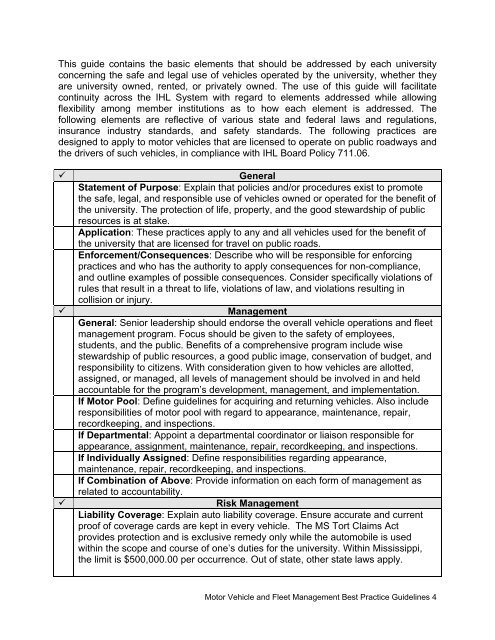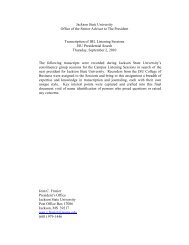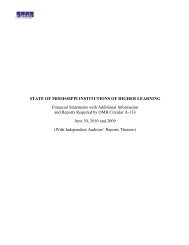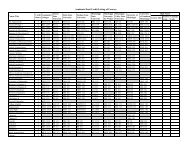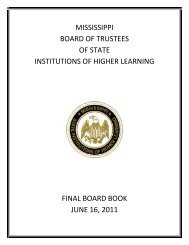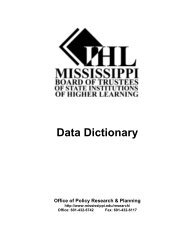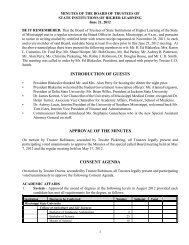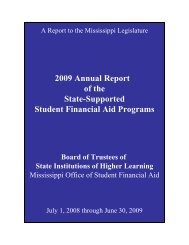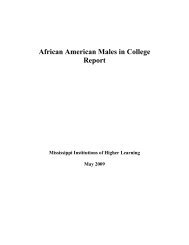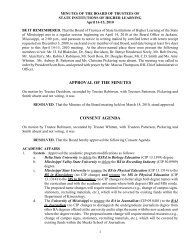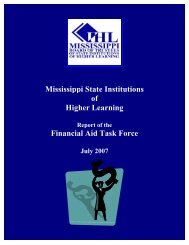Motor Vehicle And Fleet Management Best Practice Guidelines
Motor Vehicle And Fleet Management Best Practice Guidelines
Motor Vehicle And Fleet Management Best Practice Guidelines
Create successful ePaper yourself
Turn your PDF publications into a flip-book with our unique Google optimized e-Paper software.
This guide contains the basic elements that should be addressed by each universityconcerning the safe and legal use of vehicles operated by the university, whether theyare university owned, rented, or privately owned. The use of this guide will facilitatecontinuity across the IHL System with regard to elements addressed while allowingflexibility among member institutions as to how each element is addressed. Thefollowing elements are reflective of various state and federal laws and regulations,insurance industry standards, and safety standards. The following practices aredesigned to apply to motor vehicles that are licensed to operate on public roadways andthe drivers of such vehicles, in compliance with IHL Board Policy 711.06.GeneralStatement of Purpose: Explain that policies and/or procedures exist to promotethe safe, legal, and responsible use of vehicles owned or operated for the benefit ofthe university. The protection of life, property, and the good stewardship of publicresources is at stake.Application: These practices apply to any and all vehicles used for the benefit ofthe university that are licensed for travel on public roads.Enforcement/Consequences: Describe who will be responsible for enforcingpractices and who has the authority to apply consequences for non-compliance,and outline examples of possible consequences. Consider specifically violations ofrules that result in a threat to life, violations of law, and violations resulting incollision or injury.<strong>Management</strong>General: Senior leadership should endorse the overall vehicle operations and fleetmanagement program. Focus should be given to the safety of employees,students, and the public. Benefits of a comprehensive program include wisestewardship of public resources, a good public image, conservation of budget, andresponsibility to citizens. With consideration given to how vehicles are allotted,assigned, or managed, all levels of management should be involved in and heldaccountable for the program’s development, management, and implementation.If <strong>Motor</strong> Pool: Define guidelines for acquiring and returning vehicles. Also includeresponsibilities of motor pool with regard to appearance, maintenance, repair,recordkeeping, and inspections.If Departmental: Appoint a departmental coordinator or liaison responsible forappearance, assignment, maintenance, repair, recordkeeping, and inspections.If Individually Assigned: Define responsibilities regarding appearance,maintenance, repair, recordkeeping, and inspections.If Combination of Above: Provide information on each form of management asrelated to accountability.Risk <strong>Management</strong>Liability Coverage: Explain auto liability coverage. Ensure accurate and currentproof of coverage cards are kept in every vehicle. The MS Tort Claims Actprovides protection and is exclusive remedy only while the automobile is usedwithin the scope and course of one’s duties for the university. Within Mississippi,the limit is $500,000.00 per occurrence. Out of state, other state laws apply.<strong>Motor</strong> <strong>Vehicle</strong> and <strong>Fleet</strong> <strong>Management</strong> <strong>Best</strong> <strong>Practice</strong> <strong>Guidelines</strong> 4


